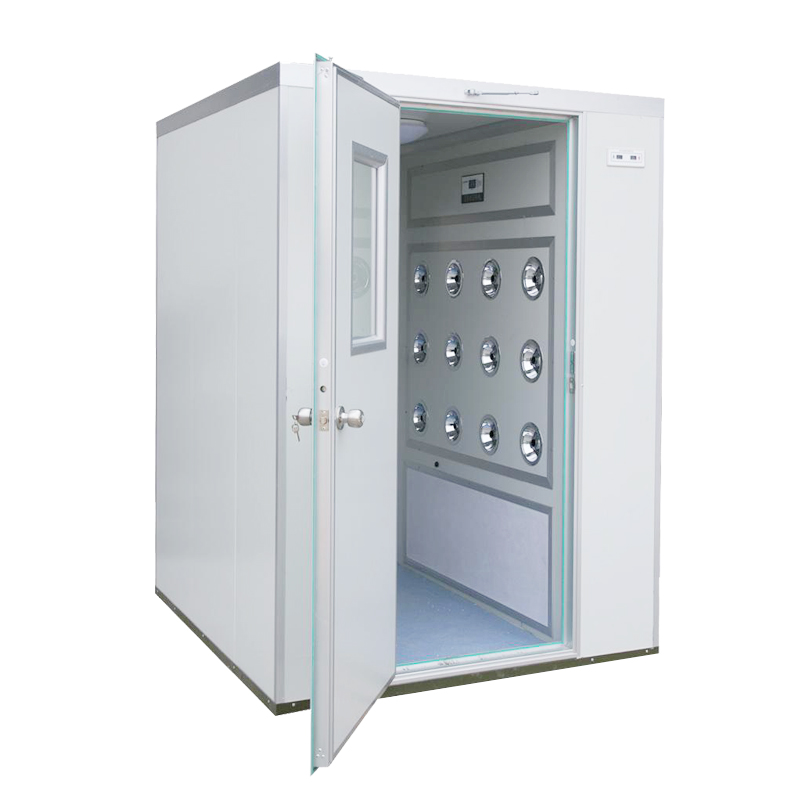

The operation of an air shower involves a combination o […]
The operation of an air shower involves a combination of high-velocity filtered air and strategically positioned nozzles or jets to remove contaminants from the surface of individuals entering a cleanroom or controlled environment. Here is a general overview of how an air shower works:
Entry and Activation:
Individuals entering the cleanroom or controlled environment first pass through the entry vestibule or anteroom.The air shower is activated either automatically when a person enters or manually through a
control panel.
High-Velocity Air Jets:

Upon activation, high-velocity air jets release a turbulent and controlled stream of filtered air.
The air jets are strategically positioned in the walls, ceiling, and sometimes the floor of the air shower to ensure thorough coverage of the person entering.
Particle Dislodgment:
The high-velocity air flow is designed to dislodge and remove loose particles from the clothing, hair, and body of the individual.
The force of the air is effective in removing larger particles, including dust, lint, and other contaminants.
Filtration:
The air used in the air shower is filtered through high-efficiency particulate air (HEPA) or ultra-low penetration air (ULPA) filters.
These filters capture particles down to very small sizes, ensuring that the air blown onto the person is of a high cleanliness level.
Airflow Direction:
The airflow in the air shower is typically designed to move from the top to the bottom or from the sides toward the center, ensuring that contaminants are effectively carried away and out of the cleanroom environment.
Exit:
After a brief exposure to the high-velocity air jets, the individual exits the air shower and enters the cleanroom or controlled environment.
The entire process is designed to minimize the introduction of contaminants into the cleanroom, helping to maintain a controlled and sterile environment. Air showers are often used in conjunction with other cleanroom protocols, such as gowning procedures and air
filtration systems, to ensure optimal cleanliness and prevent contamination during manufacturing or research processes.
Our new models offer superb design;competitive prices and their new features give them distinct advantages over similar products from other manufacturers.